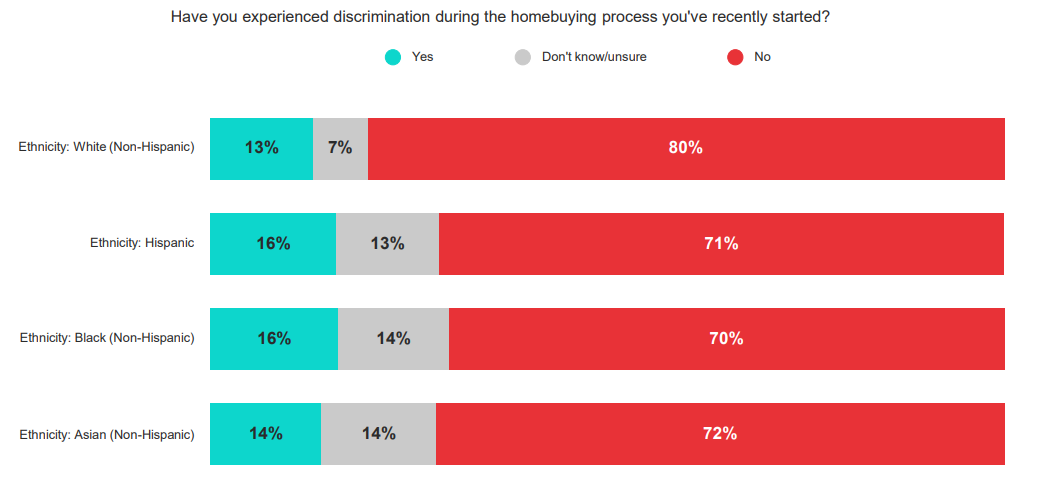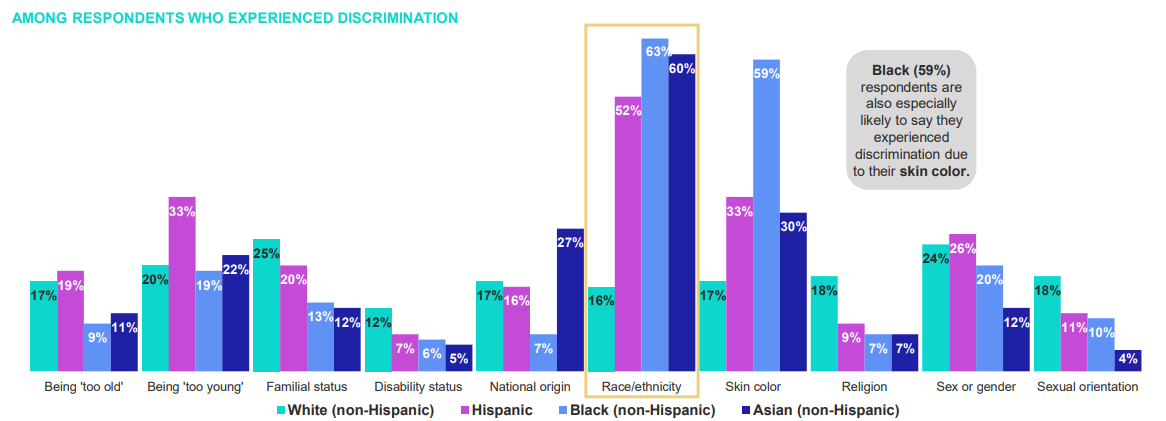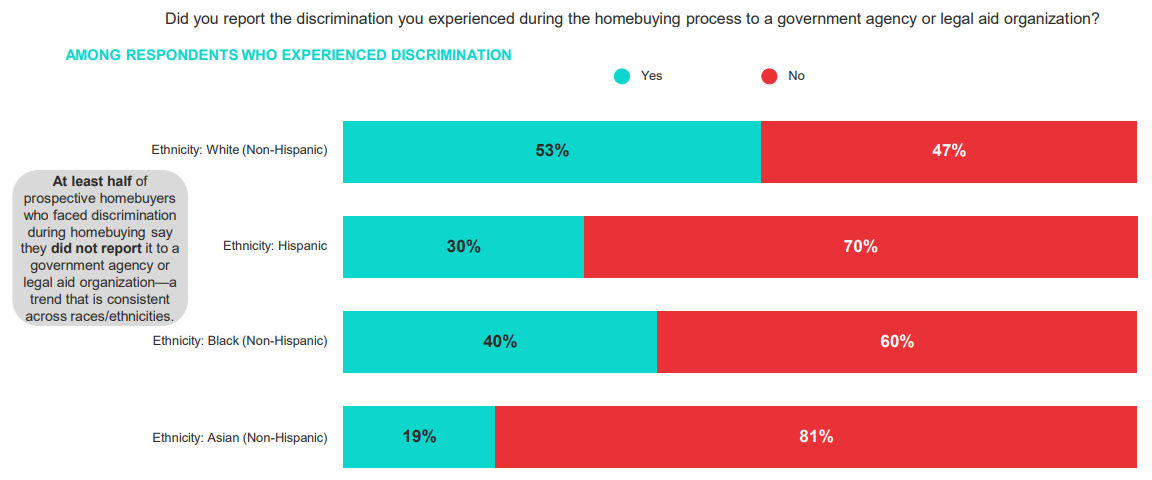The current real estate market’s elevated home prices and mortgage rates, as well as limited inventory, are the top reasons that Realtors and prospective homebuyers across races and ethnicities cite as barriers to purchasing a home, according to two new reports from the National Association of Realtors.
In partnership with Morning Consult, NAR’s 2023 Experiences & Barriers of Prospective Home Buyers Across Races/Ethnicities report surveyed White, Hispanic/Latino, Black, and Asian prospective homebuyers about their experiences. NAR’s 2023 Experiences & Barriers of Prospective Home Buyers: Member Study surveyed Realtors who focus on residential real estate regarding the latest buyer with whom they worked who has not yet purchased a home, and it compares findings with the consumer study.
“Homebuyers face the most difficult affordability conditions in nearly 40 years due to limited inventory and rising mortgage interest rates,” said Jessica Lautz, NAR’s Deputy Chief Economist and VP of Research. “The impact is exacerbated among first-time buyers who are more likely to be from underrepresented segments of the population.”

Among prospective homebuyers, Asian (27%), Hispanic (24%), Black (20%), and white (15%) respondents say the main reason they have not yet purchased a home is because they are waiting for prices to drop. White respondents (15%) are just as likely to say it is because they are waiting for mortgage rates to drop. Additional market-related reasons that prospective homebuyers cite as barriers include waiting for mortgage rates to decline (18%–25% of all four groups) and not having enough available homes within their budget (19%–24% of all four groups).
The top three reasons why Realtors report homebuyers have not yet purchased homes are the same as reported by consumers:
- Not enough homes available for purchase in homebuyers’ budgets (34%)
- Waiting for mortgage rates to drop as higher prices affect affordability (18%)
- Waiting for home prices to drop (9%)
These three factors greatly impact affordability since limited inventory drives up home prices and higher rates increase monthly mortgage payments, according to the report.
Saving for a competitive home down payment is also a primary obstacle for prospective home buyers (6%–9% of all four groups). In terms of what holds them back from saving for a sufficient down payment, prospective home buyers across races and ethnicities cite as barriers current rent or mortgage payments (43%–56% of all four groups) and credit card payments (38%–57% of all four groups). Despite this, awareness about existing down payment assistance programs is low among prospective buyers saving for down payments.
Only 8%–15% of all four groups applied for these programs, 20%–33% considered but did not apply to these programs, 21%–32% did not consider these programs, and one-third (30%–33% of all four groups) say that they are not aware of these assistance programs. For prospective homebuyers who are aware of down payment assistance programs, the primary reason they did not apply for them is because they did not know enough about the programs (44%–58% of all four groups).
More than half of Realtors (53%) say that at least one issue is holding their latest homebuyer back from saving a competitive down payment: most likely current rent or mortgage payments (23%) or credit card balances or payments (17%). Further, only 23% of Realtors say that their buyers experiencing these challenges have applied for down payment assistance programs. This is most likely because their income is too high (30%), they did not know enough about the programs (19%), or they are worried about the competitiveness of their offers in multiple-bid situations (17%).
"Down payment assistance programs often fly under the radar for potential homebuyers. Using programs like FHA, VA, or USDA loans can make homeownership more attainable," said Lautz. "Experts, such as agents who are Realtors, can educate potential buyers about these programs. Doing so will bring in more first-time buyers and narrow the racial homeownership gap."
It's no secret that discrimination also plays a role in the homebuying process. About one in six (13%–16% of all four groups) prospective homebuyers across races and ethnicities report facing discrimination. More than half of Black (63%), Asian (60%), and Hispanic (52%) prospective homebuyers who report this say it was due to their race or ethnicity.
Of these, the largest proportions of every group are most likely to report that this discrimination manifests in steering toward or away from specific neighborhoods (36%–51% of all four groups) and more strict requirements (32%–48% of all four groups). Despite all of this, unfortunately, most discrimination during the homebuying process goes unreported: 47%–81% of those who describe it did not report it to a government agency or legal aid organization.
Overall, just 1% of Realtors who took the survey reported that their buyers experienced discrimination during the homebuying process, while 13% were not sure. Those reporting discrimination are most likely to say this is based on race or ethnicity and lay this at the feet of lenders, saying that homebuyers experienced this in the type of loan product offered (43%), or that homebuyers did not receive a call back from the lender(s) (29%).
Of those who report discrimination, 57% report it based on race, 29% report it based on age, and 21% report it based on familial status (including marriage or parental status). Overall, just 7% say that the homebuyer reported the discrimination, which was on the basis of either race or religion or both, to a government agency or legal aid organization.
To read NAR’s 2023 Experiences & Barriers of Prospective Home Buyers Across Races/Ethnicities, including more data, charts, and methodology, click here.
To read NAR’s 2023 Experiences & Barriers of Prospective Home Buyers: Member Study in full, including more data, charts, and methodology, click here.

 DSNews The homepage of the servicing industry
DSNews The homepage of the servicing industry











